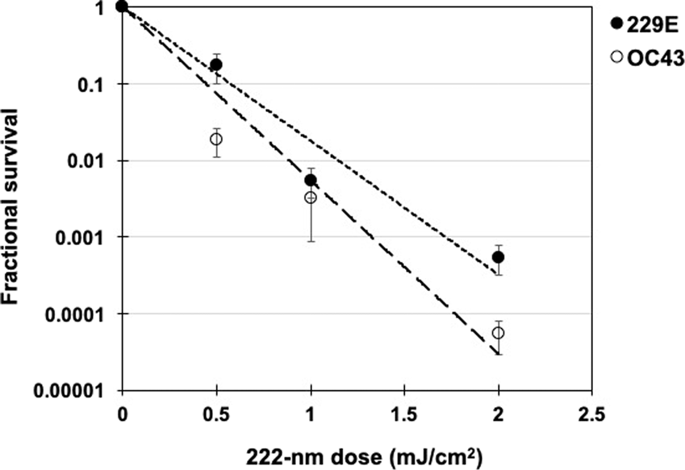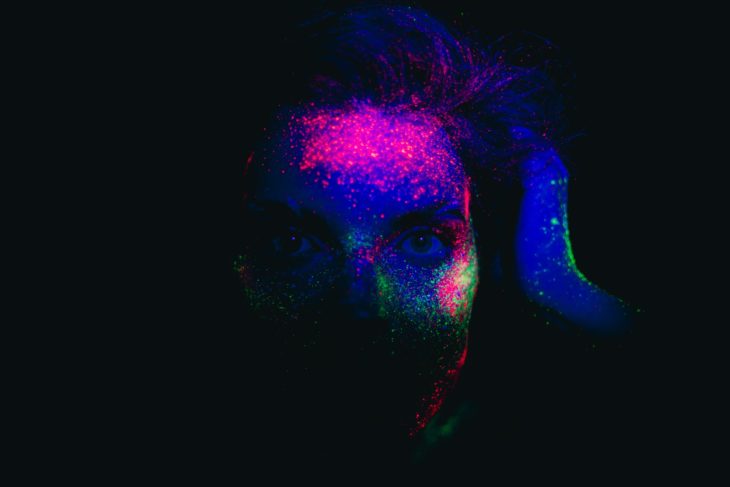We’ve talked before about the pros and cons of using UV-C light for disinfecting packages and other surfaces that might be contaminated by COVID-19. The major downside of UV-C: it’s a hazard to humans. So that basically makes us say ‘no thanks.’
But a new study published in Nature explores the possibility of using far-UV-C light to deactivate coronaviruses while posing no danger to mammals. This could be great news for individuals and businesses who want to disinfect with UV light without causing harm to people.
Here’s what you need to know:
- Far UV-C light has a shorter wavelength than regular UV-C, and despite its higher energy appears not to harm human tissue while still killing viruses.
- Far UV-C-equipped excimer lights are inexpensive in theory, but hard to buy.
- Researchers conducted tests with very short distances between the light and the test viruses, and even then it took several minutes to deactivate the viruses.
- While far UV-C light isn’t a danger to human flesh, it does degrade plastics, so businesses might be reluctant to deploy these lights.
How UV-C and far-UV-C lights work to kill (or fry) viruses
UV-C light works by effectively “frying” viruses and other pathogens at the genetic level. That’s also why it’s a danger to humans. These lights cause damage similar to direct sunlight exposure, like sunburns, premature aging, eye damage, and even skin cancer.
But unlike UV-C, which has a typical wavelength of 254 nm, far-UV-C light ranges between 207 to 222 nm. The study, conducted by Manuela Buonanno, David Welch, Igor Shuryak, and David J. Brenner, demonstrated that far-UV-C light effectively neutralizes common cold coronaviruses like alpha HCoV-229E and beta HCoV-OC43 without causing any damage to human tissue. An earlier study, involving the same researchers, showed similar results with influenza.

Coronavirus survival as a function of the dose of far-UVC light.
How can a light powerful enough to scramble germs be safe for human tissue? The key is that the far-UV-C light has a wavelength high enough to be optimally blocked by human skin, and like all UV-C light, energetic enough to destroy viruses. Near UV-C light also kills viruses, and so do shorter length radiation modes like X-rays, but they both penetrate skin better. The 222-nm wavelength is in a bit of a sweet spot. I’ll let the researchers speak for themselves:
In short (see below) the reason is that far-UV-C light has a range in biological materials of less than a few micrometers, and thus it cannot reach living human cells in the skin or eyes, being absorbed in the skin stratum corneum or the ocular tear layer. But because viruses (and bacteria) are extremely small, far-UV-C light can still penetrate and kill them.
The even better news is that these lights don’t have to be expensive. The paper says that the correct wavelength can be emitted by inexpensive excimer lamps, which can be installed in public places.
So, Walmart can just hang a bunch of far-UV-C excimer lamps on the ceiling and end the COVID-19 pandemic overnight? Wait, not so fast. As always, there are catches.
Drawbacks of far-UV-C disinfection
These Krypton-Chloride excimer lamps might be relatively inexpensive, but good luck finding them. I did a bit of searching and found only one supplier: Ushio, and every vendor I can find claims that they’re not for sale. Perhaps they’ve already been reserved by big businesses, but that leaves the little guys out in the cold. It’s not clear if there’s a realistic prospect for scaling the production of these devices to the quantities needed for widespread use in a pandemic.
The other drawback is the study placed the lamps only 22 cm away from the test chamber, or just a bit over 8.5 inches. Most commercial light fixtures are hung much higher than that. The paper explained that “the distance between the lamp and the irradiation chamber permitted a single lamp to uniformly irradiate the entire exposure window area.” We don’t know how effective these lamps would be if placed at greater distances, and shadows could be a problem.
Another drawback is, just as with regular UV-C, far-UV-C doesn’t kill viruses instantly. It’s a sliding scale that increases with more exposure. With UV light used at the current limit for human exposure (3 mJ/cm^2/hr), this would be:
- ~90% in ~8 minutes
- ~95% in ~11 minutes
- ~99% in ~16 minutes
- 99.9% in ~25 minutes
Without humans present or if they were wearing protective gear, UV-C could be used at higher doses, resulting in faster sterilization. Ushio makes a 300W lamp that appears to deliver over 100W of UV-C, and could deliver 2mJ/cm^2 to room-sized areas in seconds.
But don’t take these drawbacks as dismissive, these are real potential reductions in viral contamination. But at the same time, far-UV-C light doesn’t appear to be a silver bullet, either.
Researchers touch on another issue in the study, and that’s the fact that far-UV-C light degrades plastic over time. The researchers used sheets of plastic to test different exposure conditions, and they found that the plastic broke down such that it reduced the light transmission over time by as much as 15%.
Of course, much of the merchandise and even some of the fixtures in a store is made of plastic. Are retailers and other businesses going to be willing to spend money outfitting their buildings with lights that could end up damaging their merchandise? That, unfortunately, seems doubtful.
